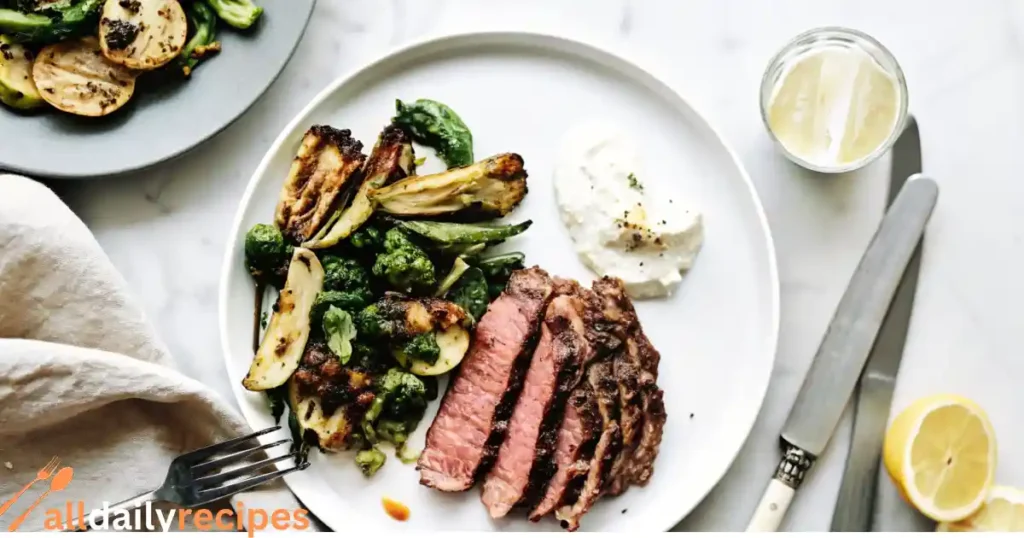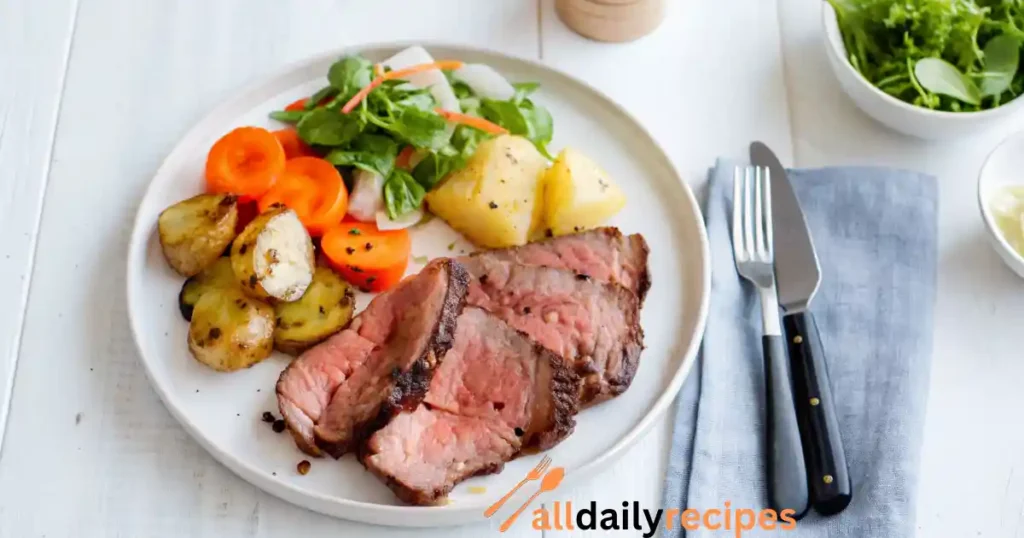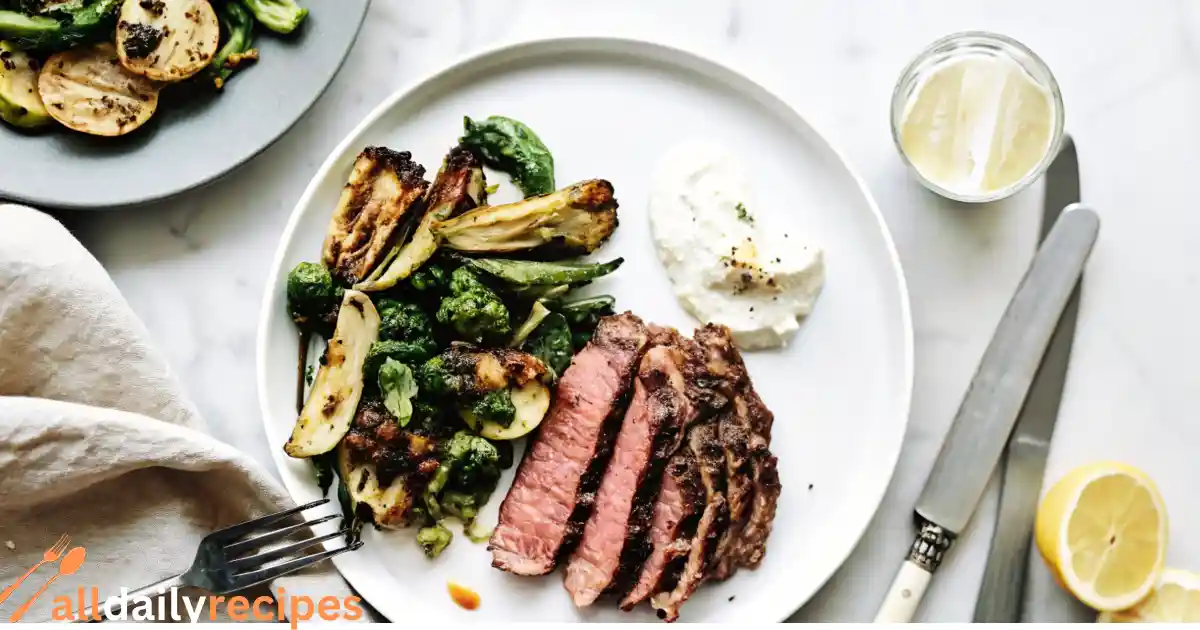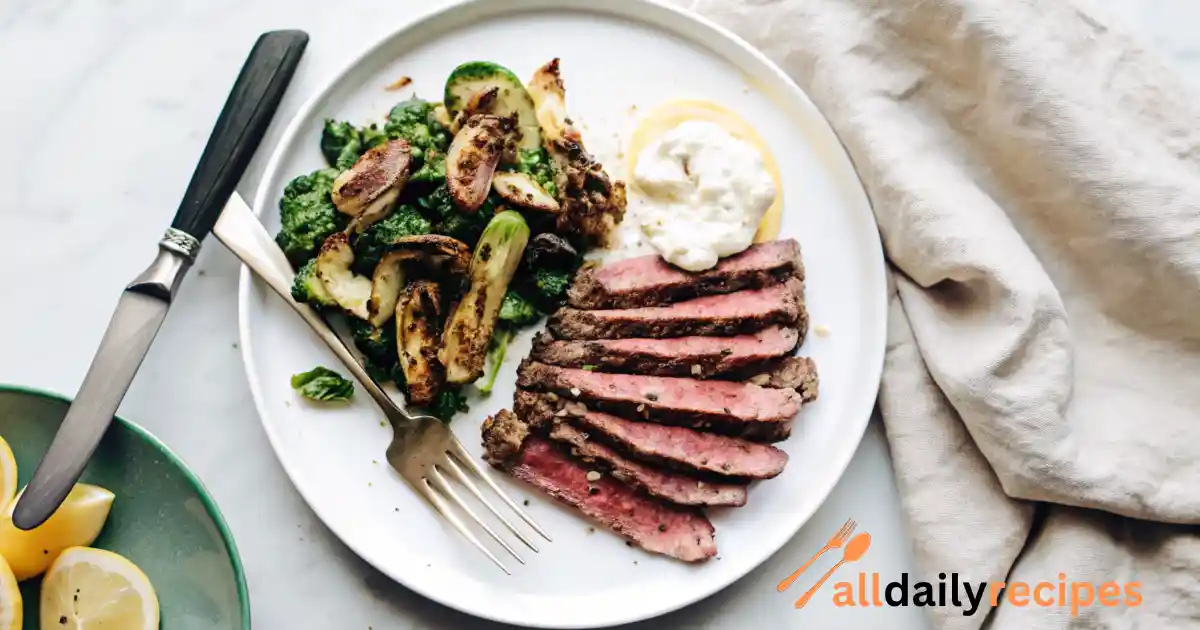The first time I cooked an oyster blade steak, I didn’t expect much just a budget‑friendly cut I picked up on impulse. But once I seared it and tasted how rich and deep the beef flavor was, I was hooked. Since then, it’s become one of my secret go‑to cuts for weeknight dinners, BBQs, and special meals alike. This underrated steak comes from the shoulder section (also known as the top blade), and when prepared properly, delivers remarkable taste and texture at a fraction of the cost of premium cuts.
Whether you grill it, pan‑sear it, or slow‑braise it, oyster blade steak rewards you with juicy, tender results. This guide will walk you through how to select it, prepare it, cook it right, and serve it with style. By the end, you’ll feel confident including this flavorful cut in your kitchen rotation.
Table of Contents
Why You’ll Love This Recipe
- Rich beefy flavour
- Budget-friendly and easy to find
- Works beautifully with both quick and slow cooking methods
- Satisfying and juicy when sliced correctly
- Adapts well to a wide range of flavour profiles
This recipe is ideal for anyone who loves a satisfying, flavourful steak without spending a fortune. Thanks to its marbling, oyster blade delivers an excellent balance between taste and tenderness. Whether seared, grilled, or braised, it responds well to seasoning and marinades. If you’re experimenting with different recipes or looking to maximize your grocery budget, this steak offers restaurant-quality taste with minimal effort.
Ingredients
For seared oyster blade steak:
- 1 to 1.5 lbs oyster blade steak, trimmed and brought to room temperature
- 1 tablespoon olive oil
- Salt and freshly ground black pepper, to taste
- 1 teaspoon garlic powder
- 1 teaspoon onion powder
For braised oyster blade steak:
- 1.5 to 2 lbs oyster blade steak (whole or cut into large chunks)
- 1 tablespoon vegetable oil
- 1 large onion, chopped
- 2 garlic cloves, minced
- 2 carrots, chopped
- 2 cups beef broth
- 1 tablespoon tomato paste
- 1 teaspoon dried thyme
- Salt and black pepper, to taste

Step-by-Step Instructions
Quick Seared Method
- Take the steak out of the fridge and let it sit for 20 minutes.
- Pat dry with paper towels and trim any visible sinew.
- Season both sides with salt, pepper, garlic powder, and onion powder.
- Heat a heavy skillet or grill pan over high heat and add olive oil.
- Sear the steak for 2 to 3 minutes on each side until a golden crust forms.
- Remove from heat and let it rest for about 5 to 10 minutes.
- Slice thinly across the grain to ensure tenderness and serve right away.
Braised Oyster Blade Method
- Preheat your oven to 320°F (160°C).
- Season the meat and brown it in a Dutch oven with vegetable oil.
- Remove the steak and cook the chopped onion, garlic, and carrots until softened.
- Stir in tomato paste and pour in the beef broth. Add thyme, salt, and pepper.
- Return the steak to the pot, cover with a lid, and braise in the oven for 2.5 to 3 hours.
- Let the meat rest for a few minutes. Slice or shred and serve with the rich sauce.
Pro Tips and Variations
- Marinate before searing for extra tenderness.
- Grill over medium-high heat and flip once for best results.
- Use spice blends like smoked paprika or cumin for a flavour boost.
- For an Asian twist, use soy sauce, garlic, and sesame oil.
- Try a Latin marinade with lime, coriander, and chili powder.
- You can slow-cook the braised version for 6–8 hours on low.
- Perfect with cauliflower mash or a fresh garden salad.
How to Serve Oyster Blade Steak
- Slice and serve with roasted potatoes and steamed greens.
- Great for tacos with salsa, grilled veggies, and lime.
- Add to a rice bowl with beans, corn, and avocado.
- Top a salad with warm steak slices and vinaigrette.
- Use in wraps or sandwiches with arugula and sauce.
Always slice against the grain to keep the meat tender. Resting the steak is also essential to lock in those juices.
How to Store Oyster Blade Steak
- Store cooked steak in an airtight container for up to 4 days.
- Freeze raw or cooked steak for up to 3 months.
- Reheat gently in a pan with broth or in the microwave.
- Use leftovers in wraps, fried rice, or salads.
- Cook and portion for meal prep with grains and veggies.

Nutrition Facts (per 4 oz cooked)
- Calories: ~240
- Protein: ~26 g
- Fat: ~16 g
- Carbs: 0 g
- Iron: ~12% DV
FAQ
Is oyster blade steak good for grilling?
Yes but only if the sinew is removed. When trimmed into flat iron steaks, oyster blade becomes one of the most tender cuts for grilling. Cook quickly over high heat to medium-rare, and always rest before slicing.
How do you remove the sinew from oyster blade steak?
To remove the sinew, lay the steak flat and carefully slice along the connective tissue in the center to separate the top and bottom muscle. You’ll end up with two long flat iron steaks. A sharp knife and a steady hand help or just ask your butcher to do it for you.
What does oyster blade taste like?
Oyster blade has a rich, beefy flavor thanks to its marbling and proximity to the chuck. When braised, it becomes deeply savory and tender. When grilled (sinew removed), it has a clean, juicy taste similar to sirloin, with more natural depth.
Is oyster blade steak good for grilling?
Yes but only if the sinew is removed. When trimmed into flat iron steaks, oyster blade becomes one of the most tender cuts for grilling. Cook quickly over high heat to medium-rare, and always rest before slicing.
Can you braise oyster blade steak whole?
Absolutely. Oyster blade is excellent for slow-cooking whole. The connective tissue breaks down into gelatin over time, making it fork-tender and deeply flavorful. Braise at low heat (around 130°C) for 2.5–3 hours for best results.
How do you remove the sinew from oyster blade steak?
To remove the sinew, lay the steak flat and carefully slice along the connective tissue in the center to separate the top and bottom muscle. You’ll end up with two long flat iron steaks. A sharp knife and a steady hand help or just ask your butcher to do it for you.
What does oyster blade taste like?
Oyster blade has a rich, beefy flavor thanks to its marbling and proximity to the chuck. When braised, it becomes deeply savory and tender. When grilled (sinew removed), it has a clean, juicy taste similar to sirloin, with more natural depth.
What’s the difference between oyster blade and flat iron steak?
Flat iron steak is trimmed to remove the sinew; oyster blade includes it unless removed manually.
Conclusion
Let’s rewind for a second. What started as a humble cut from the cow’s shoulder often overlooked, occasionally misunderstood has now earned its place in your kitchen repertoire. Oyster blade steak isn’t just another budget option; it’s a cut that rewards the cook who’s willing to look a little deeper, slice a little smarter, and simmer a little longer.
Whether you’ve got time to slow-braise it into comfort food bliss, or you’re grilling it flat iron-style for a fast midweek dinner, this cut delivers more flavor per dollar than almost anything else behind the butcher’s glass.
You don’t need fancy tools, a chef’s jacket, or even a recipe. You just need curiosity and maybe a good butcher on speed dial. So go on. Try it. Slice it. Rest it. Braise it. And when you taste it? You’ll wonder why it ever played second fiddle to the flashier steaks.

Oyster Blade Steak – The Ultimate Guide to This Bold, Budget-Friendly Cut
Ingredients
Equipment
Method
- Quick Seared Method: Remove steak from the refrigerator and let it sit for 20 minutes. Pat dry with paper towels and trim visible sinew.
- Season both sides with salt, pepper, garlic powder, and onion powder. Heat a heavy skillet or grill pan over high heat and add olive oil.
- Sear the steak for 2–3 minutes per side until a golden crust forms. Remove from heat and let rest for 5–10 minutes. Slice thinly across the grain and serve immediately.
- Braised Oyster Blade Method: Preheat oven to 320°F (160°C). Season and brown the steak in a Dutch oven with vegetable oil, then set aside.
- Cook onion, garlic, and carrots until softened. Stir in tomato paste and pour in beef broth. Add thyme, salt, and pepper. Return the beef to the pot, cover, and braise for 2.5–3 hours until tender.
- Let rest briefly, then slice or shred the beef and serve with the braising sauce and your favorite sides.

